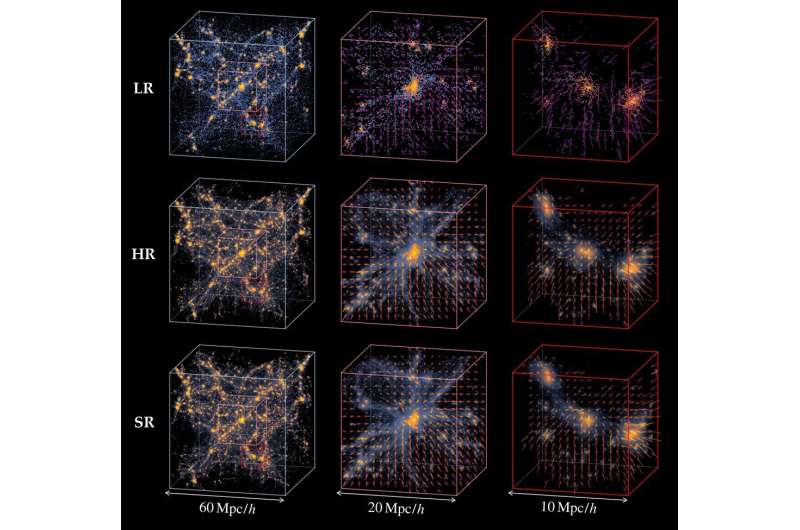A new method simulates the universe 1000 times faster

Cosmologists love universe simulations. Even models covering hundreds of millions of light years can be useful for understanding fundamental aspects of cosmology and the early universe. There's just one problem—they're extremely computationally intensive. A 500-million-light-year swath of the universe could take more than three weeks to simulate. Now, scientists led by Yin Li at the Flatiron Institute have developed a way to run these cosmically huge models 1000 times faster. That 500-million-year light-year swath could then be simulated in 36 minutes.
Older algorithms took such a long time in part because of a tradeoff. Existing models could either simulate a very detailed, very small slice of the cosmos or a vaguely detailed larger slice of it. They could provide either high resolution or a large area to study, not both.
To overcome this dichotomy, Dr. Li turned to an AI technique called a generative adversarial network (GAN). This algorithm pits two competing algorithms again each other, and then iterates on those algorithms with slight changes to them and judges whether those incremental changes improved the algorithm or not. Eventually, with enough iterations, both algorithms become much more accurate naturally on their own.
This GAN used two algorithms with very different purposes. One took low-resolution images of a part of the universe and attempted to create high-resolution images that matched observed reality. The other algorithm tried to tell if a given patch of the universe was created by the first algorithm or created using more conventional, computationally intensive methods.

The algorithms took over two years to develop, and even Dr. Li seemed surprised when they "suddenly…started working. We got beautiful results that matched better than expected." The inner workings of many AI algorithms are not well understood, even by the people who created them.
Whatever the reason for the eventual success of the algorithms, they now provide consistently realistic models in a fraction of the time of traditional methods. Dr. Li and his colleagues couldn't even tell the simulations created by their own algorithms compared to simulations created by more conventional methods in blind trials.
As with science as a whole, there is still much more work to do. Right now, the simulation only accounts for gravity and dark matter. While those might be the biggest components of the large-scale structures that are the focus of these algorithms, other things such as the electromagnetic force and normal matter have an important impact on the cosmos as well. Dr. Li and his team plan to focus some more development time on modeling such "smaller" events as supernovae and star formation.
For now though, their algorithm can start providing large, high resolution models of the cosmos in a fraction of the time. And cosmologists everywhere will be sure to thank them for it.


















